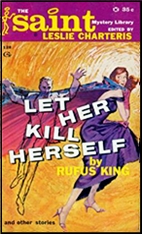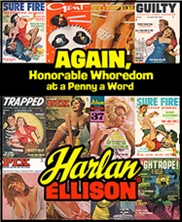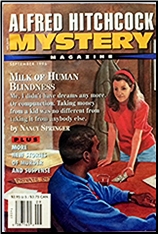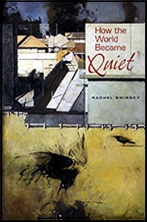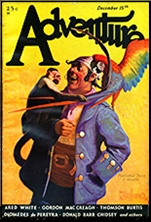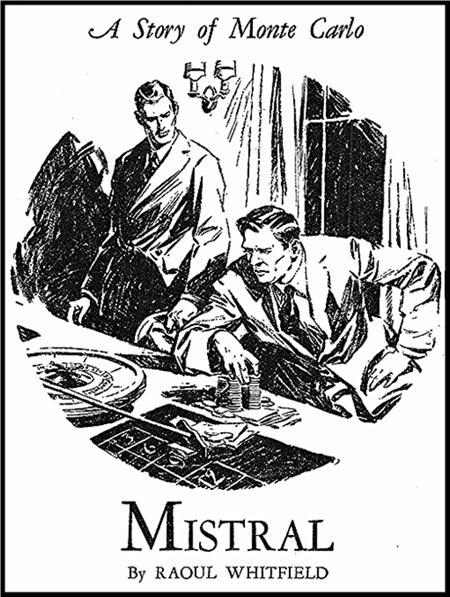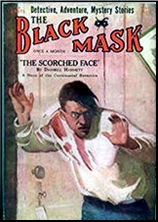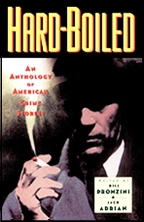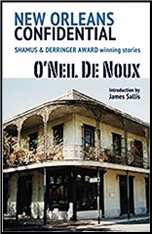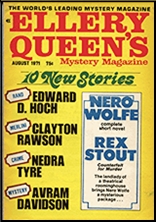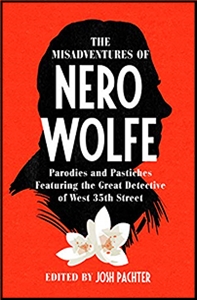REVIEWED BY DAVID VINEYARD:
ROBERT CARSON “Aloha Means Goodbye.†Serialized in five parts in the Saturday Evening Post (*), June 28 to July 26, 1941. No book publication known. Filmed as: Across the Pacific (1942), with Humphrey Bogart, Mary Astor, Sidney Greenstreet. Screenplay and Directed by John Huston.
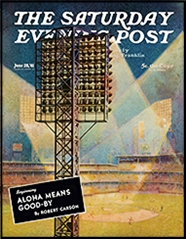
The pier was melting into the fog. Swinging slowly in the oily water with the tug straining on her stern, the Genoa Maru came around. The siren sounded. The noise seemed to run in an endless circle through long halls of fog, constantly coming back.
Richard (Ricky) Leland is sailing from Vancouver on the Japanese freighter the Genoa Maru, with fellow passengers Alberta Marlow (a very calm dame), whose eccentric Uncle Dan owns a plantation on his own island in Hawaii, and the mysterious Dr. Barca, a mysterious Filipino (…he looked genial and unimposing, except for his eyes which were cold and black). No one is quite what they seem including Ricky who appears to be a disgraced American Artillery Officer, but we soon learn is in reality an American agent.
Even the Genoa Maru isn’t quite what it seems.
If you have seen the John Huston film Across the Pacific, his first after The Maltese Falcon, and his last before going off to the war, you know the basic story. Barca and the Japanese are part of a dastardly plot to invade and lead a sneak attack on the States involving Alberta Marlow’s Uncle Dan and his plantation, and Ricky Leland is not who or what he seems to be.
In the film Barca becomes the German, Sidney Greenstreet, and the plot, thanks to Pearl Harbor, turns to Panama instead of Hawaii (coming once the title had been released and making no sense in the film since they never cross the Pacific), but just how close the movie is to the serial (I’m not sure the serial ever appeared in book form) is surprising (right down to the shootout in the Japanese movie theater — that makes more sense in Hawaii than Panama), because the real joy of the film is the by play and double entendre between Bogart and Mary Astor and the war of wits with Greenstreet, and much of that is lifted directly from the dialogue in the serial.
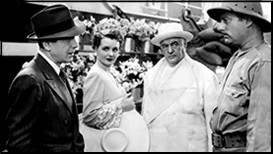
“I wish I could make up my mind about you.†Alberta said. “Men like you upset girls.â€
“I feel very happy and secure,†Ricky said. “You’ll go over and make friends with eccentric Uncle Dan and we’ll get married and live happily ever after on Uncle Dan’s dough. And if you don’t give me any spending money I’ll stay home all the time.â€
“I don’t want his money.â€
Ricky opened his eyes wide and looked at her. “If you keep talking that way,†Ricky said severely, “our association must end.â€
Carson was a successful author who frequently contributed stories to the Post, and this serial that ran there between late June and early August of 1941 is a lively tale, accompanied by handsome full color illustrations by Ben Stahl.
Just as Huston virtually transcribed Hammett’s novel the same seems to be true of this serial, though obviously Carson is no Hammett, as Pacific is no Falcon.
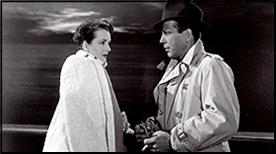
There are minor differences, of course, but Huston was always the most literary of directors and famously honed close to his source material.
“Aloha†is a product of the slicks as magazines like the Post, American, Liberty, and Collier’s were then known, and much has been written belittling the slick style in comparison to the pulps, but some of the best writers of the time, from Fitzgerald and Faulkner to Philip Wylie and John P. Marquand worked there, and pulp favorites like Erle Stanley Gardner, Fred Nebel, Robert Carse, Edison Marshall, Sax Rohmer, and Rex Stout crossed over into the slicks, and were often paid more. They might get up to $5,000 for a serial at a time a novel might bring as little as $500.
The Post was always well associated with the mystery genre as the home of Charlie Chan, Mr. Moto, Perry Mason, Albert Campion, Roderick Alleyn, and Hercule Poirot.
“Aloha Means Good-bye†is a fast moving tale in the best sense, with something of the same pace and style of the tongue in cheek movie. I’m not sure if you can really call a book prescient for predicting a Japanese attack on the US in the summer of 1941 (Van Wyck Mason predicted one in 1932 in The Branded Spy Murders; it was something that had been inevitable for much of the century), but it was great timing, however you look at it, and even now an entertaining tale thanks to its lighthearted style.
—
(*) For anyone interested you can go to Internet Archive and find over 6,000 issues of the Saturday Evening Post from the twenties to the mid-sixties with full serials by Agatha Christie, Erle Stanley Gardner, Rex Stout, Earl Derr Biggers, P. G. Wodehouse, Dornford Yates, Hammond Innes, Alistair MacLean, Alan LeMay, Eugene Manlove Rhodes, John P, Marquand, Luke Short, Jack Finney, C. S. Forester, Paul Gallico, James Warner Bellah, and many more, as well as short fiction by Philip Wylie, Robert A. Heinlein, Ray Bradbury, F. Scott Fitzgerald, William Faulkner, Fred Nebel, Lester Dent, and others, illustrated by the likes of Matt Clark, Harold Von Schmidt, and Mitchell Hooks.
